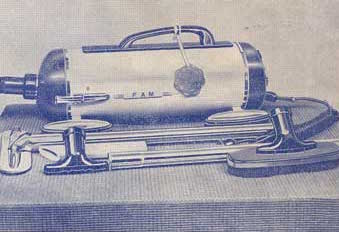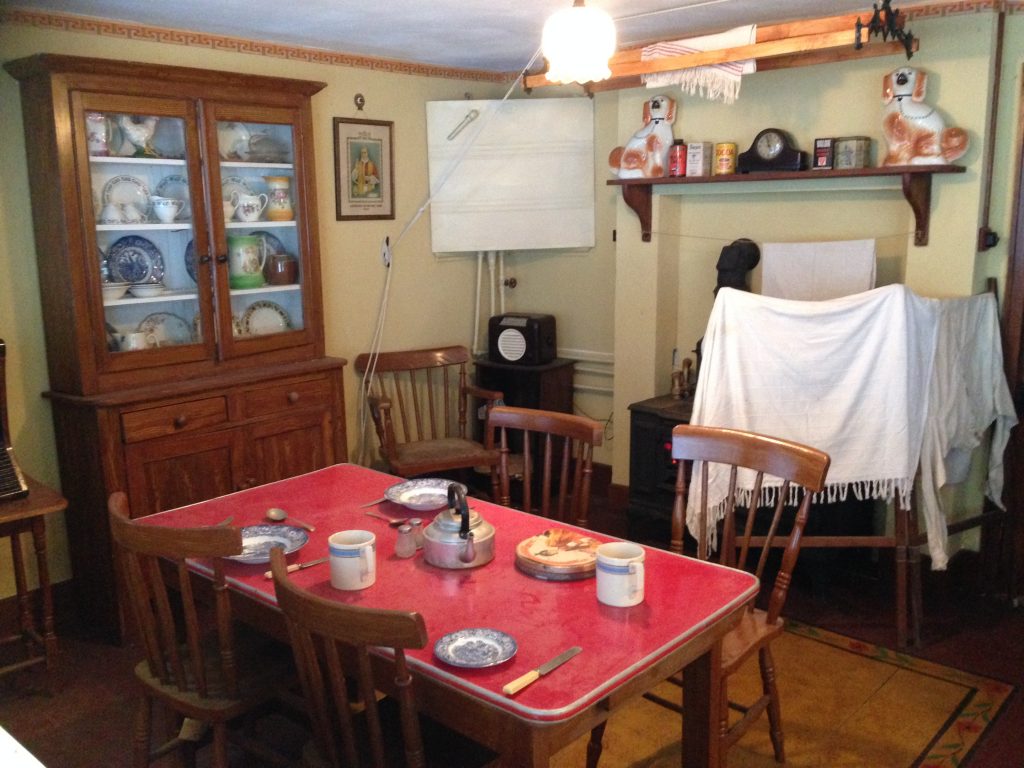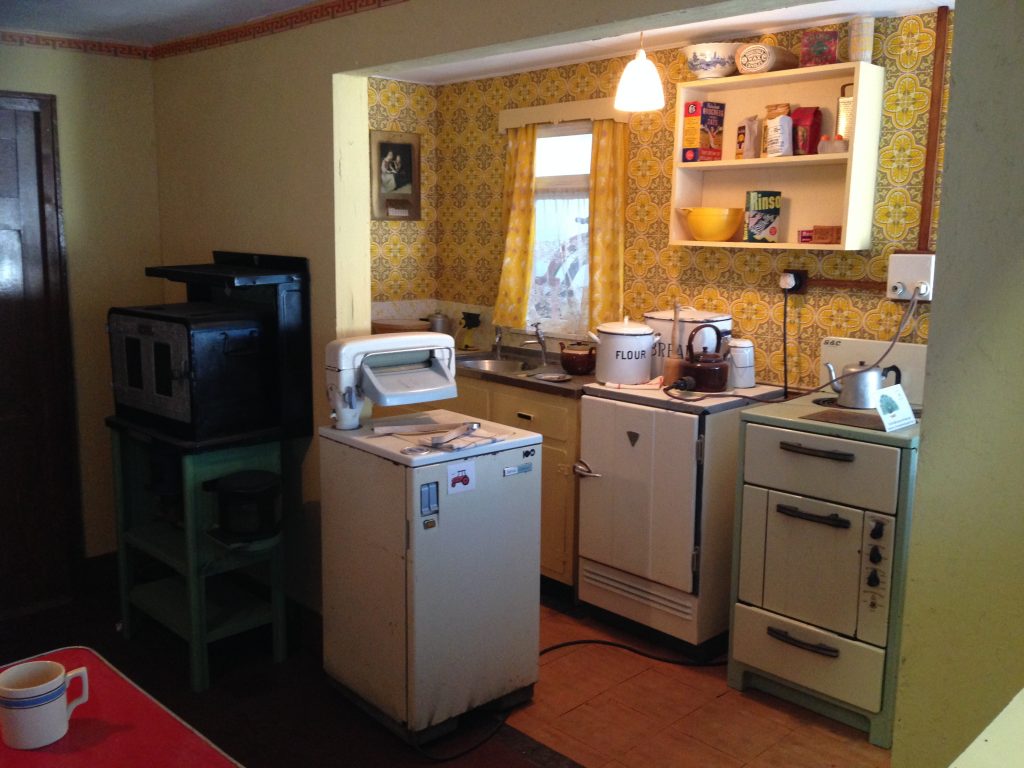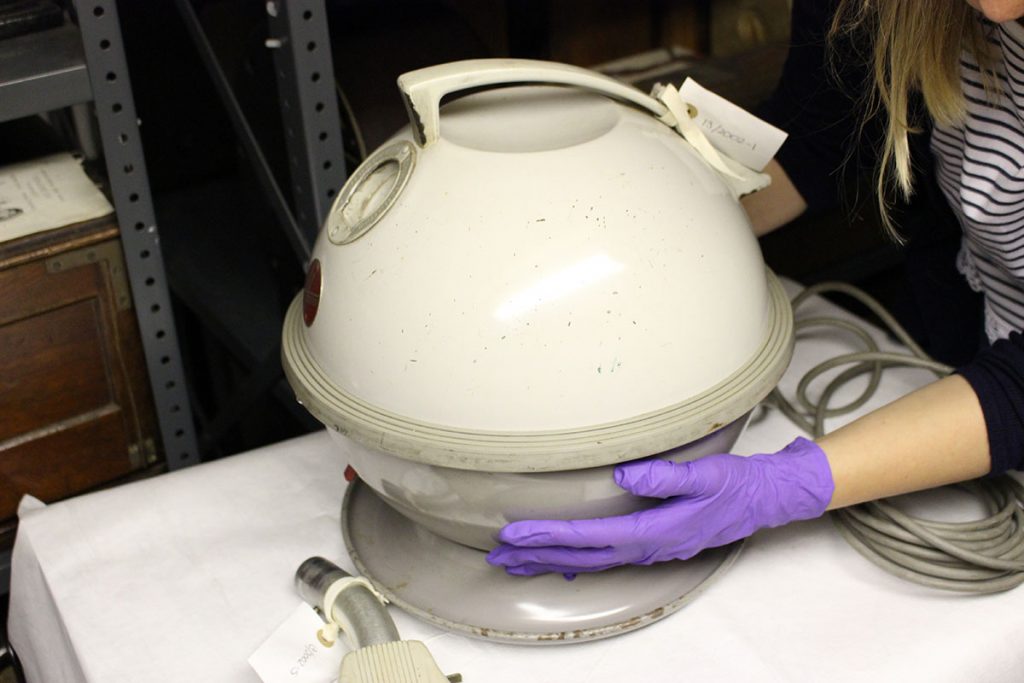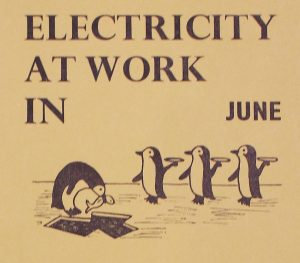As the Kitchen Power exhibition is currently closed, due to the arrival of the COVID-19 coronavirus in Ireland, I have been making daily posts on social media about some of the objects in the exhibition. The idea is to give viewers an idea of some of the Irish objects that were collected for the exhibition, including ones from the National Museum of Ireland – Country Life collection, and loans from the ESB Archives, the Irish Agricultural Museum and private collectors. This blog post collects the first set of tweets about exhibition objects, which I started in response to the #MuseumFromHome hashtag on Twitter. I’ve also posted these to Facebook and Instagram, as well.
As the #KitchenPower exhibition is currently closed, here’s one of the exhibits, a Hoover Spinarinse spin dryer from the @NMIreland collection. It was made around 1963 in Wales, and is designed to work at high spin speeds with natural fibres (no polyester here!) #MuseumFromHome pic.twitter.com/ZlYJibogVW
— Electric Irish Homes (@electricIEhomes) March 26, 2020
Another exhibit from the #KitchenPower exhibition: this is a primrose Morphy Richards iron from the late 1950s, which is on loan from Tom Spalding in Cork. It came in a range of different colours, including red, pale green and chrome. pic.twitter.com/4NKrAXM0WZ
— Electric Irish Homes (@electricIEhomes) March 27, 2020
From the #KitchenPower exhibition: A bright orange 1960s Hoover cylinder vacuum cleaner, donated to the @NMIreland collection by Dr Lydia Foy. Cylinders increased in popularity, as they were more maneuverable than upright cleaners. #MuseumFromHome #Pride #TransDayOfVisibility pic.twitter.com/ypvnsYsgqM
— Electric Irish Homes (@electricIEhomes) March 31, 2020
‘It beats… as it sweeps… as it cleans’: the upright Hoover Dirtsearcher, designed for use in smaller houses. This brand became synonymous with the action of vacuuming in Britain and Ireland, where we still ‘hoover’ the house. #MuseumFromHome #KitchenPower pic.twitter.com/kvhPmYkgiK
— Electric Irish Homes (@electricIEhomes) April 2, 2020
The twin tub washing machine was the height of progress in the mid-1960s, complete with automatic timers. This Servis Supertwin is on loan from Bernard O’Connell @BerOCon1, and while this one was made in England, they also had a Dublin factory. #MuseumFromHome #KitchenPower pic.twitter.com/cjQl3hjXlK
— Electric Irish Homes (@electricIEhomes) April 3, 2020
An early style of copper electric kettle which was sold during the 1940s/50s, with a Bakelite handle and no cut-off switch. This is a popular Swan Brand model, which was made in Dublin and is on loan from Patrick Boyle. #KitchenPower #MuseumFromHome @NMIreland pic.twitter.com/63v2oVwK6Y
— Electric Irish Homes (@electricIEhomes) April 6, 2020
A familiar sight for decades in many rural Irish houses, the @ESBNetworks fuse board and electricity meter was installed during rural electrification. This one was made by Siemens in 1954, and is on loan to @NMIreland from Bernard O’Connell @BerOCon1 #KitchenPower #MuseumFromHome pic.twitter.com/VjOlzipALe
— Electric Irish Homes (@electricIEhomes) April 7, 2020
Small Frigidaire under counter refrigerator from the 1950s. This red one with contrasting pale blue icebox from the @NMIreland collection was made in England, and was available in a range of bright colours to match any kitchen. #KitchenPower #MuseumFromHome pic.twitter.com/JdJFDkyKHD
— Electric Irish Homes (@electricIEhomes) April 8, 2020
Today’s #KitchenPower object is a 1950s General Electric steam iron with an AC adapter and thermostat. It was made in the USA with quite a streamlined shape and a cantilevered handle. On loan from the Irish Agricultural Museum @johnstowncastle #MuseumFromHome #PlacesToVisitLater pic.twitter.com/DkAbyjDZdh
— Electric Irish Homes (@electricIEhomes) April 9, 2020
A common feature of Catholic homes, the traditional Sacred Heart oil lamp was upgraded with a red light bulb during rural electrification. This 1960s example from the @NMIreland is mounted on a laminated back board with gold trim.#KitchenPower #MuseumFromHome #Easter #StayAtHome pic.twitter.com/FAX8sIEwT8
— Electric Irish Homes (@electricIEhomes) April 10, 2020
This 1950s ESB coin box was used to collect coins for the electricity bill and was then brought to the ESB office to be unlocked. The side slots were organised by coin and were labelled in Irish and English. On loan from Bernard O’Connell @BerOCon1 #KitchenPower #MuseumFromHome pic.twitter.com/siWxWydDrC
— Electric Irish Homes (@electricIEhomes) April 14, 2020
GEC and @ESBNetworks sponsored a yearly nationwide bread baking competition from 1958, with categories for adults and schools. This apron and sash are on loan from Mary Lyons, who represented Mayo in the 1968 schools competition. @ESBArchives #KitchenPower #MuseumFromHome pic.twitter.com/CBcyKQ0nuR
— Electric Irish Homes (@electricIEhomes) April 15, 2020
Another brightly coloured enamel kitchen appliance from the #KitchenPower exhibition, this Revo R44 electric cooker has two rings, warming plate, grill & oven. Bought in 1956, it was designed with older cabinet-style legs. On loan from Bernard O’Connell @BerOCon1 #MuseumFromHome pic.twitter.com/8WPWf1VEbn
— Electric Irish Homes (@electricIEhomes) April 16, 2020

